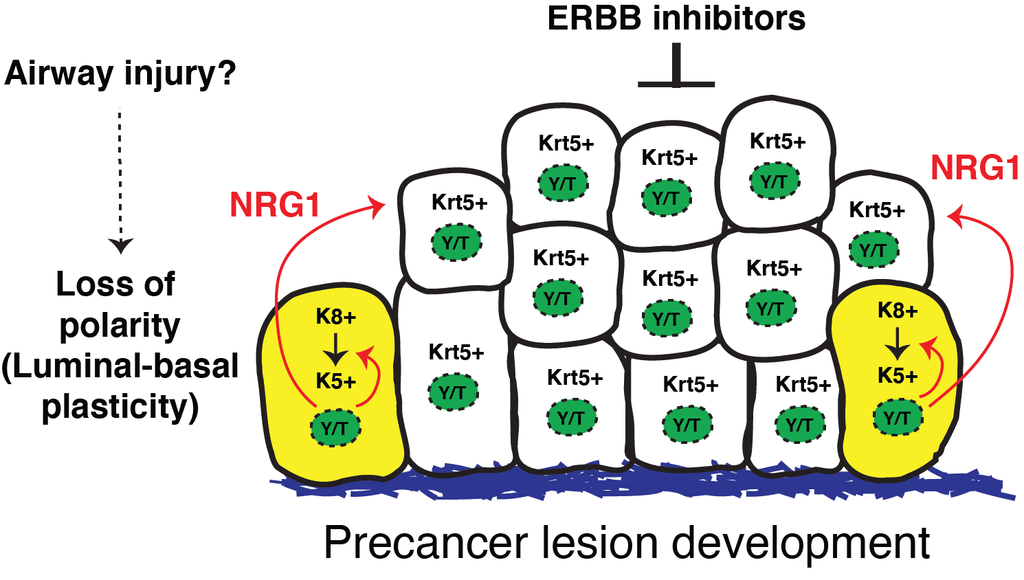A recently published study from the Varelas laboratory has identified new mechanisms contributing to the development of precancer lesions in lung airways. Precancer lesions that arise in airways are associated with chronic lung damage, such as that induced by cigarette smoke, and such lesions are predisposed to transitioning into lung squamous cell carcinoma, a poorly treatable subtype of non-small cell lung cancers.

The study shows that disrupted epithelial polarity leads to airway epithelial stem cell expansion, resulting in pathologies that resemble human precancer. Aberrant epithelial polarity was induced by the conditional deletion of the polarity regulator Crumbs3, which the group showed leads to activation of the transcriptional regulators YAP and TAZ. The study showed that YAP/TAZ-regulated gene expression drives a gene expression program that stimulates epithelial plasticity and stem cell growth, and associates with the progression of precancer lesions in human patients. Through analysis of YAP/TAZ-regulated genes, an important role was uncovered for the growth factor Neuregulin-1, which is directly induced by YAP/TAZ and stimulates signaling via the ERBB-receptors. Notably, the study showed that inhibition of ERBB receptors was capably of preventing and treating precancer lesions in polarity-defective animals.
The study, which was published on April 26, 2021 in PNAS, offers new knowledge into the etiology of lung precancer pathology, and provides directions for identifying and intercepting lung squamous cell carcinoma at the earliest stages.